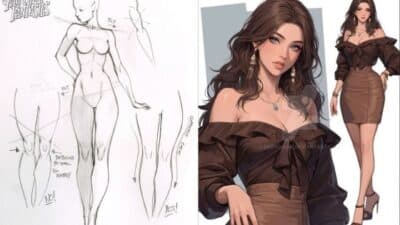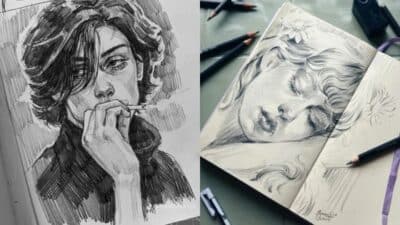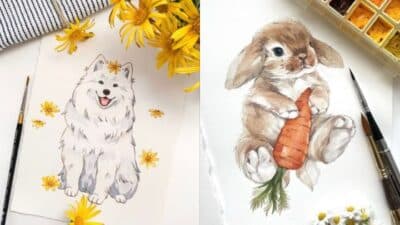Finding inspiration for your next sketch can sometimes feel challenging, especially when you’re staring at a blank page. Whether you’re a complete beginner picking up a pencil for the first time or an experienced artist looking for quick creative exercises, having a go-to list of drawing ideas can spark your imagination and keep your artistic skills sharp.
This collection of six sketch drawing ideas offers diverse subjects that range from adorable animals and everyday items to nature scenes and imaginative creatures, ensuring you’ll find something that matches your current mood and skill level. You’ll discover how simple tools and creative approaches can transform basic concepts into engaging artwork that builds your confidence and technical abilities.
1) Cute animal doodles like a sleeping cat or playful puppy
Animal doodles are perfect for beginners because they use simple shapes and don’t require perfect proportions. You can start with basic circles and ovals to create adorable creatures.
For a sleeping cat, draw a curved oval for the body and a smaller circle for the head. Add closed eyes with simple curved lines and tiny triangular ears. Draw the tail curled around the body for that cozy sleeping position.
Playful puppies work well with chubby, round forms. Start with a large circle for the head and add floppy ears that hang down. Big, round eyes make puppies look extra cute and friendly.
You can experiment with different expressions by changing the eyes and mouth. Sleepy animals need closed or half-closed eyes, while playful ones benefit from wide, bright eyes.
Simple accessories like collars, bows, or small hearts floating nearby add personality to your doodles. These tiny details make your sketches more charming without requiring advanced drawing skills.
The key is keeping everything soft and rounded rather than sharp or angular. This approach naturally makes your animal doodles appear more approachable and endearing.
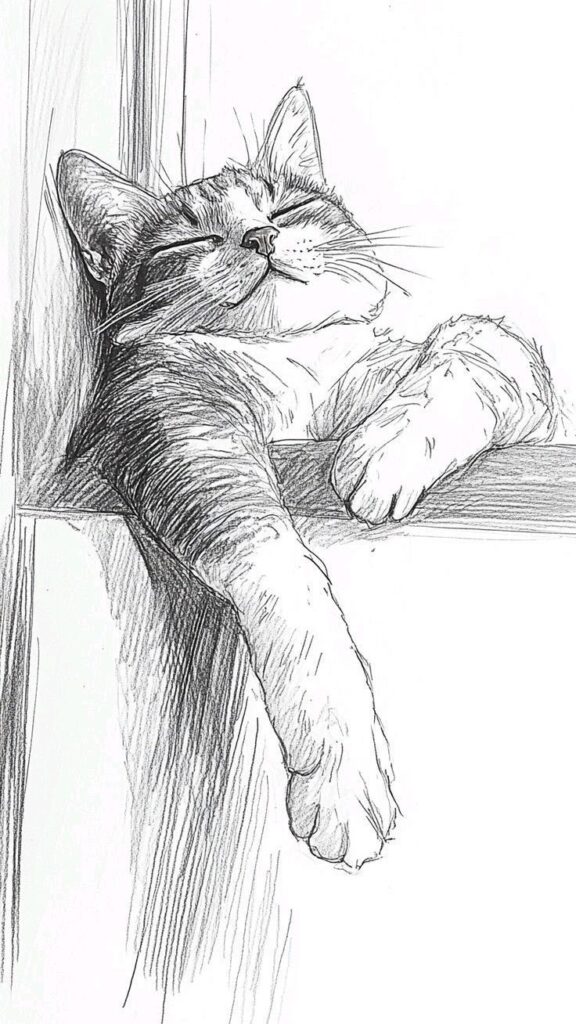

2) Everyday objects such as a coffee mug or a pair of sneakers
Drawing everyday objects is one of the best ways to improve your sketching skills. These familiar items are perfect for beginners because you see them daily and understand their basic shapes.
Start with a simple coffee mug sitting on your desk. Notice how the rim creates an oval shape from your viewing angle. The handle forms a curved line that connects to the main body.
Sneakers offer great practice for drawing complex shapes and textures. Begin with the basic outline, then add details like laces, sole patterns, and stitching. The curved forms help you understand how to show depth and dimension.
These objects are always available for reference. You can study them from different angles without needing special lighting or setup.
Practice sketching the same object multiple times from various positions. This builds your observational skills and hand coordination.
The beauty of everyday objects lies in their accessibility. Whether it’s your phone, a plant, or a pair of shoes, you have endless subjects right around you.
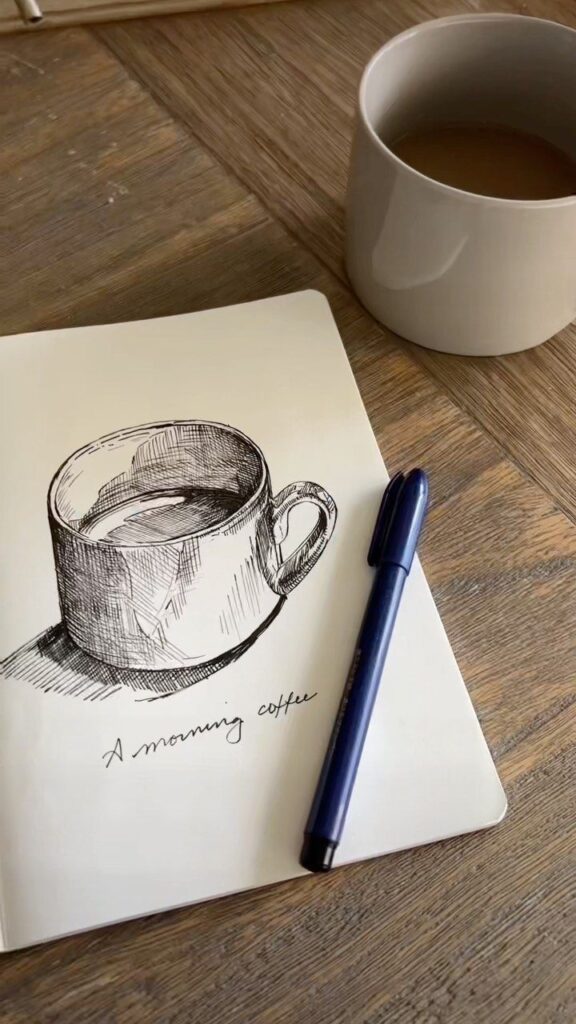
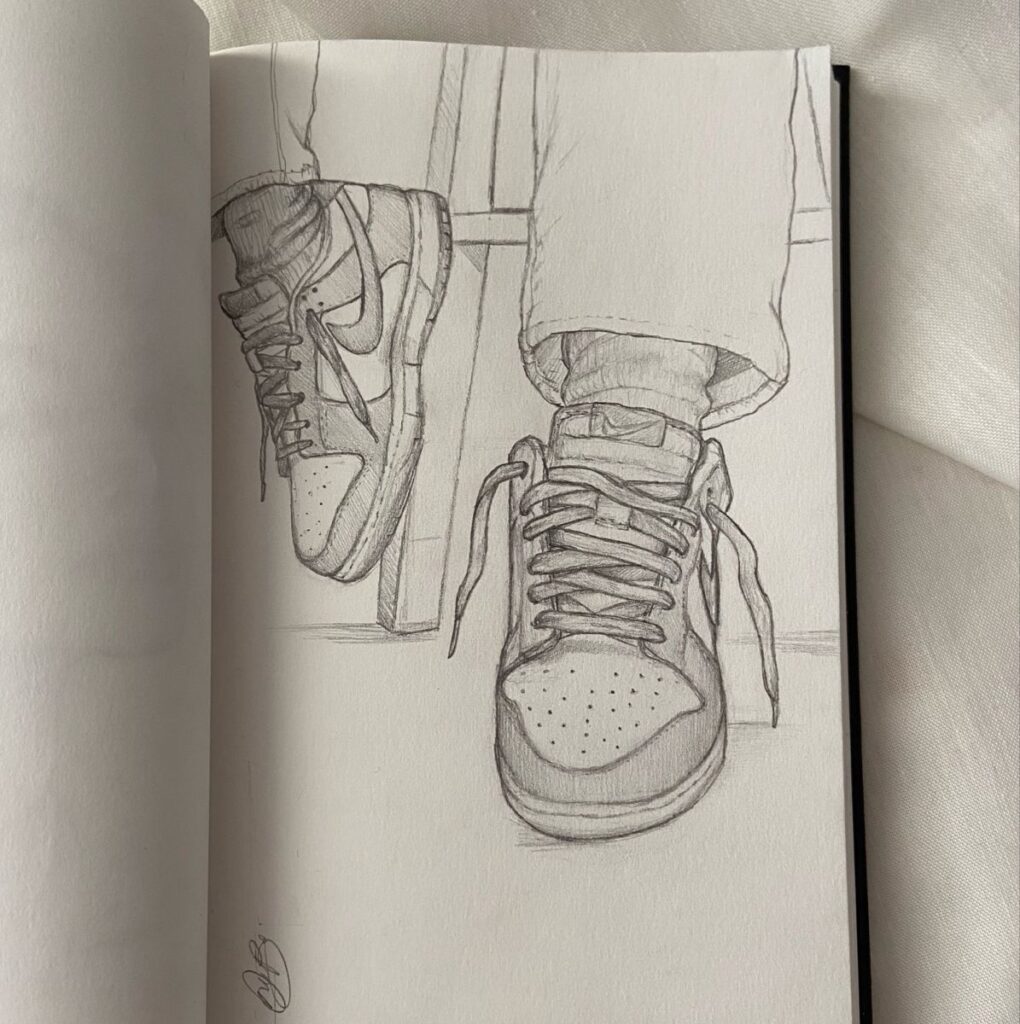
3) Simple nature scenes featuring trees, mountains, or flowers
Nature scenes offer endless inspiration for your sketching practice. You can start with basic mountain silhouettes using simple triangular shapes and curved lines.
Trees make excellent subjects for beginners. Try drawing a single oak tree with a thick trunk and rounded canopy. Focus on the overall shape rather than individual leaves.
Mountain landscapes work well with minimal detail. Sketch overlapping mountain ranges using different shades to show depth. Add a simple horizon line to ground your composition.
Flowers provide opportunities to practice curves and organic shapes. Start with basic daisy or sunflower forms using circles and petals. You don’t need perfect botanical accuracy.
Rivers and streams add movement to your nature scenes. Draw flowing water with wavy lines that follow the landscape’s natural curves.
Combine these elements for complete scenes. Place a tree in the foreground with mountains behind it. Add a few wildflowers at the base for extra interest.
Keep backgrounds simple when starting out. A basic sky with light cloud shapes complements most nature drawings without overwhelming the main subjects.


4) Fantasy creatures like dragons or fairies in whimsical poses
Fantasy creatures offer endless creative possibilities for your sketches. You can break free from traditional rules and let your imagination run wild.
Try drawing a dragon in unexpected poses. Sketch one reading a book, wearing glasses, or playing with butterflies. These playful scenarios make your artwork more engaging and fun.
Fairies don’t need to follow Disney conventions. Give your fairy neon wings and combat boots, or draw them skateboarding through clouds. Mix modern elements with magical features.
Focus on capturing personality through body language. A shy dragon peeking around a tree trunk tells a different story than one dancing in a meadow.
Experiment with different moods and expressions. Draw a grumpy unicorn having a bad hair day or a cheerful phoenix making pancakes. These contrasts create memorable characters.
Start with simple shapes and build up details gradually. Don’t worry about perfection – whimsical art celebrates creativity over technical accuracy.
Consider the setting too. Place your creatures in unexpected environments like coffee shops, libraries, or grocery stores. This juxtaposition adds humor and charm to your sketches.

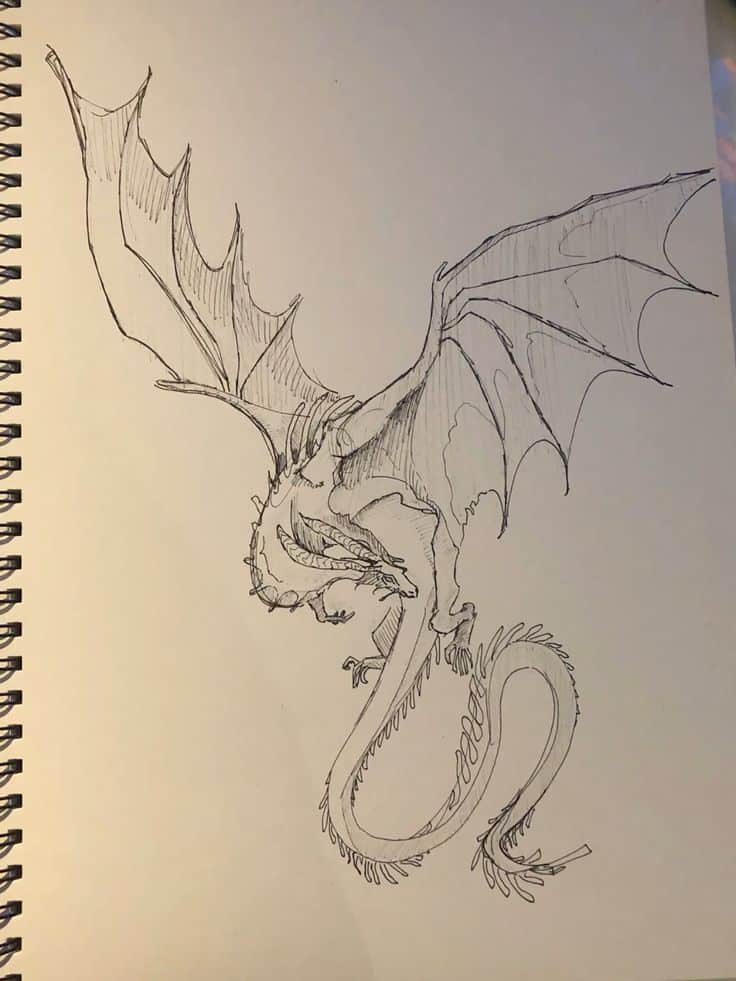
5) Quick sketches of faces with different expressions
Drawing expressive faces brings your sketches to life instantly. You can capture a wide range of human emotions through simple changes in facial features.
Start with basic emotions like happiness and sadness. For happy expressions, draw larger eyes and curved mouth lines pointing upward. Add slight crinkles around the eyes to make smiles look genuine.
Sadness requires different adjustments to your sketch. Lower the eyebrows and turn the mouth corners downward. You can add subtle lines under the eyes to suggest emotion.
Surprise works well for quick practice sessions. Draw wide, round eyes and an open mouth shape. Raise the eyebrows higher than their normal position.
Practice anger by angling eyebrows downward toward the nose. Draw a tighter mouth and add tension lines between the eyebrows.
Fear expressions use wide eyes similar to surprise but with raised eyebrows and a slightly open mouth. The key difference lies in the eyebrow position and overall facial tension.
Keep these sketches loose and quick. Focus on capturing the essential elements that communicate each emotion rather than perfect details. Regular practice with different expressions will improve your ability to draw convincing facial emotions.
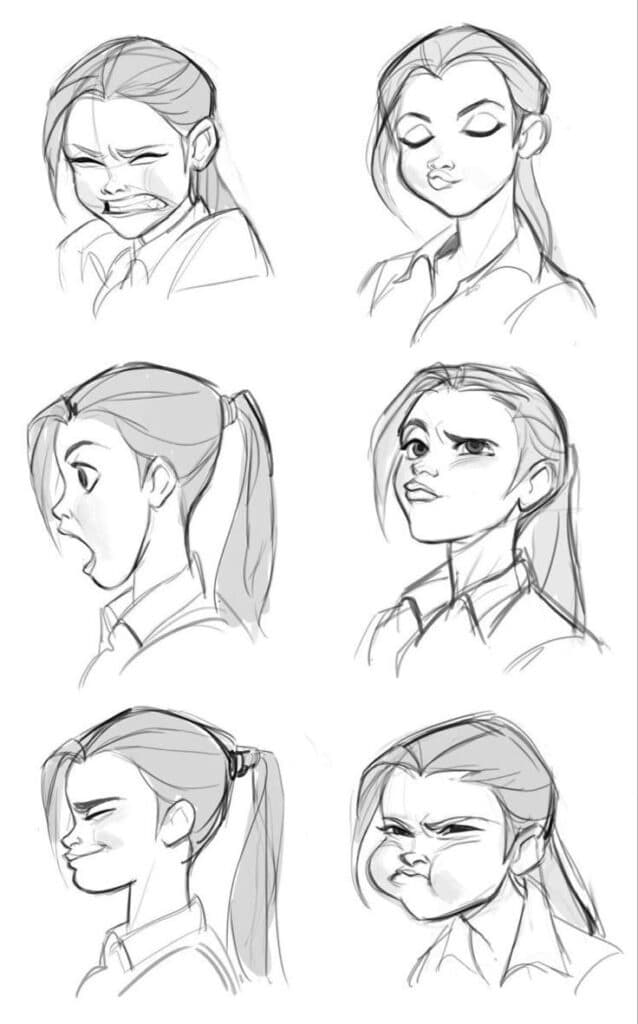

6) Minimalist patterns and geometric shapes
You can create stunning artwork using simple geometric forms and clean lines. Start with basic shapes like circles, triangles, and squares arranged in repeating patterns.
Try drawing single-line geometric designs that connect without lifting your pencil. These continuous line patterns create visual flow while maintaining simplicity.
Experiment with negative space by leaving areas blank around your shapes. The empty spaces become just as important as the drawn elements in minimalist design.
Create patterns using only straight lines at different angles. Parallel lines, intersecting grids, or radiating designs from a central point work well for beginners.
You can also try overlapping transparent shapes to create depth. Draw multiple circles or triangles that intersect, showing where they cross over each other.
Focus on symmetry and repetition to make your patterns more visually appealing. Repeat the same shape in different sizes or rotate a single element around a center point.
Keep your color palette limited or stick to black and white. This restriction helps maintain the minimalist aesthetic while making your geometric patterns feel cohesive and intentional.

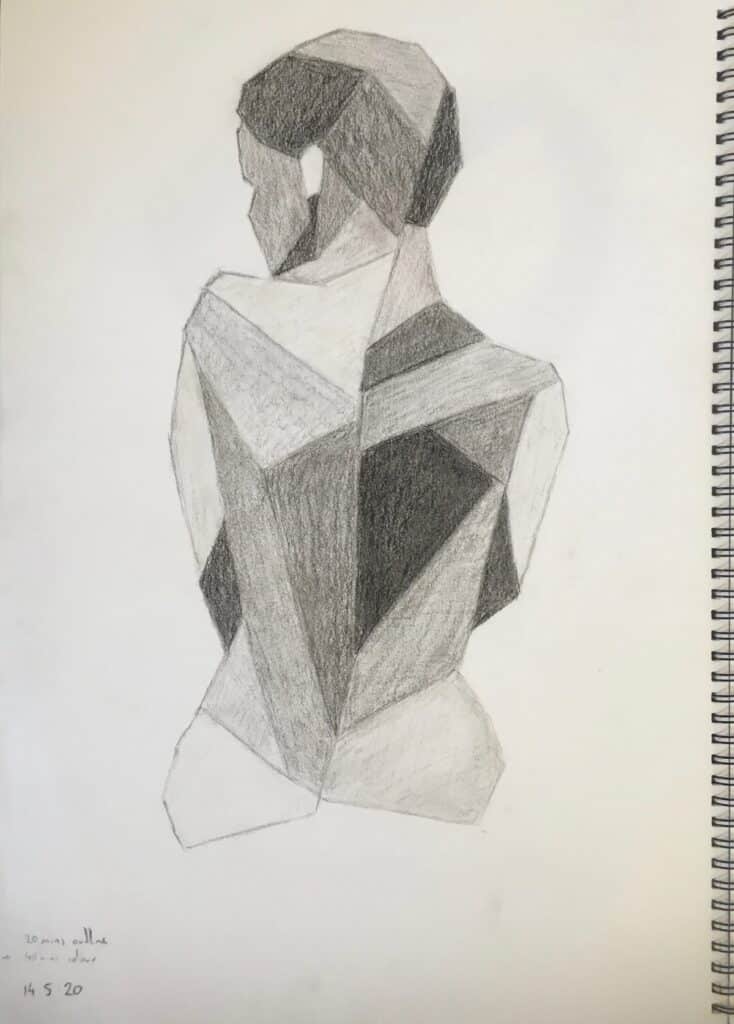
Essential Tools and Materials for Sketch Drawing
The right tools make sketching more enjoyable and help you achieve better results. Your choice of sketchbook, pencils, and reference materials directly impacts your drawing quality and creative process.
Choosing the Right Sketchbook
Your sketchbook serves as the foundation for all your sketching work. Paper weight ranges from 70gsm for light sketching to 140gsm for more detailed work with various media.
Spiral-bound sketchbooks let you fold pages completely back for comfortable drawing. Hardbound books offer better protection for your artwork and feel more professional.
Paper texture affects your drawing results significantly. Smooth paper works best for detailed line work and fine shading. Medium-texture paper handles most sketching techniques well. Rough paper creates interesting textures but makes fine details challenging.
| Paper Type | Best For | Weight Range |
|---|---|---|
| Smooth | Fine details, line art | 70-90gsm |
| Medium | General sketching | 90-140gsm |
| Rough | Textured effects | 140-200gsm |
Size matters for different sketching situations. A5 (5.5″ x 8.5″) fits easily in bags for travel sketching. A4 (8.5″ x 11″) provides more space for detailed studies.
Types of Sketching Pencils and Pens
Graphite pencils form the core of most sketching kits. Hard pencils (2H to 4H) create light, precise lines for initial sketches. Soft pencils (2B to 6B) produce rich, dark tones for shading and bold marks.
You need at least three pencils: H or 2H for light construction lines, HB for general sketching, and 2B or 4B for dark areas and shading.
Mechanical pencils with 0.5mm or 0.7mm leads offer consistent line weights. They work perfectly for detailed work and never need sharpening.
Charcoal pencils create dramatic, rich blacks that regular graphite cannot achieve. They blend easily for smooth gradations but smudge more readily.
Fine-tip pens like 0.3mm to 0.7mm technical pens produce clean, permanent lines. Brush pens offer variable line weights in a single tool, perfect for expressive sketching.
Blending tools include tortillons, blending stumps, and even your fingers for smooth shading transitions.
Benefits of Using Reference Images
Reference images transform your sketching from guesswork into informed observation. They provide accurate proportions, lighting information, and structural details you might miss from memory alone.
Photo references capture moments and poses impossible to maintain in real life. They freeze complex lighting conditions and allow you to study details at your own pace.
Multiple reference images help you understand subjects from different angles. Combine elements from various photos to create unique compositions while maintaining realistic proportions.
Live subjects and real objects offer three-dimensional understanding that photos cannot provide. They show subtle color variations and spatial relationships more accurately.
Digital reference libraries on your phone or tablet make thousands of images instantly accessible. Organize them by categories like faces, hands, animals, or landscapes for quick access during sketching sessions.
Drawing from life develops observational skills that improve all your artwork. Even when using photo references, regular life drawing practice sharpens your ability to see and interpret visual information.

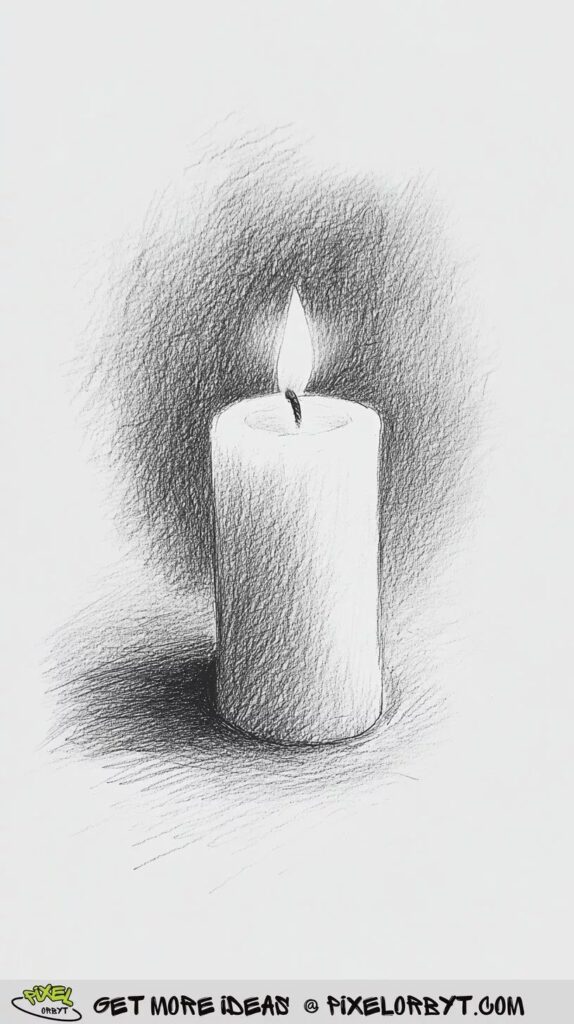
Tips to Boost Creativity with Sketch Drawing Ideas
Creative blocks happen to every artist, but breaking through them becomes easier with specific techniques. Drawing from your own experiences adds authentic depth to your sketches.
Overcoming Creative Blocks
Use a random drawing idea generator when inspiration feels stuck. These tools present unexpected prompts that push you beyond familiar subjects.
Set a five-minute daily sketching timer. This short commitment removes pressure while building consistent habits that naturally boost creativity.
Quick block-busting techniques:
- Sketch the first object you see
- Draw with your non-dominant hand
- Use only geometric shapes
- Create art from coffee stains or random marks
Change your medium completely when pencils feel stale. Switch to charcoal, markers, or digital tools to spark fresh approaches.
Draw the same subject multiple times using different styles. A simple apple becomes abstract, realistic, cartoon-like, or geometric depending on your approach.
Incorporating Personal Experiences
Your daily life contains unlimited sketch inspiration. Draw your morning coffee cup, pet’s sleeping position, or view from your window.
Personal experience prompts:
- Emotions: Sketch how anger looks as shapes and lines
- Memories: Draw childhood places from memory
- Dreams: Capture strange dream imagery immediately after waking
- Daily objects: Transform mundane items into interesting compositions
Create visual journals that combine sketching with personal thoughts. Write brief notes alongside drawings to capture context and emotions.
Sketch during routine activities like waiting for appointments or riding public transportation. These moments provide authentic subjects and natural time constraints that encourage quick, expressive drawing.
- 0shares
- Facebook0
- Pinterest0
- Twitter0

